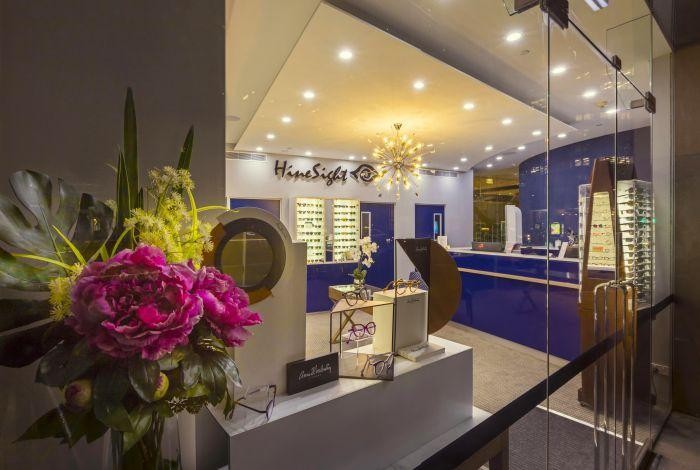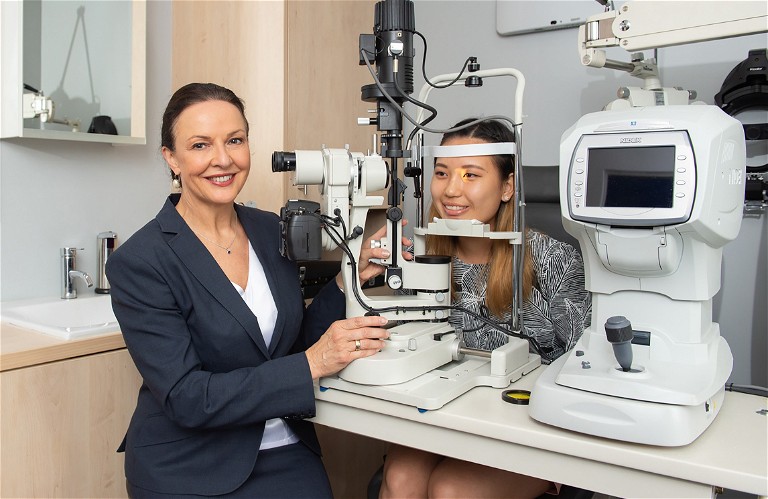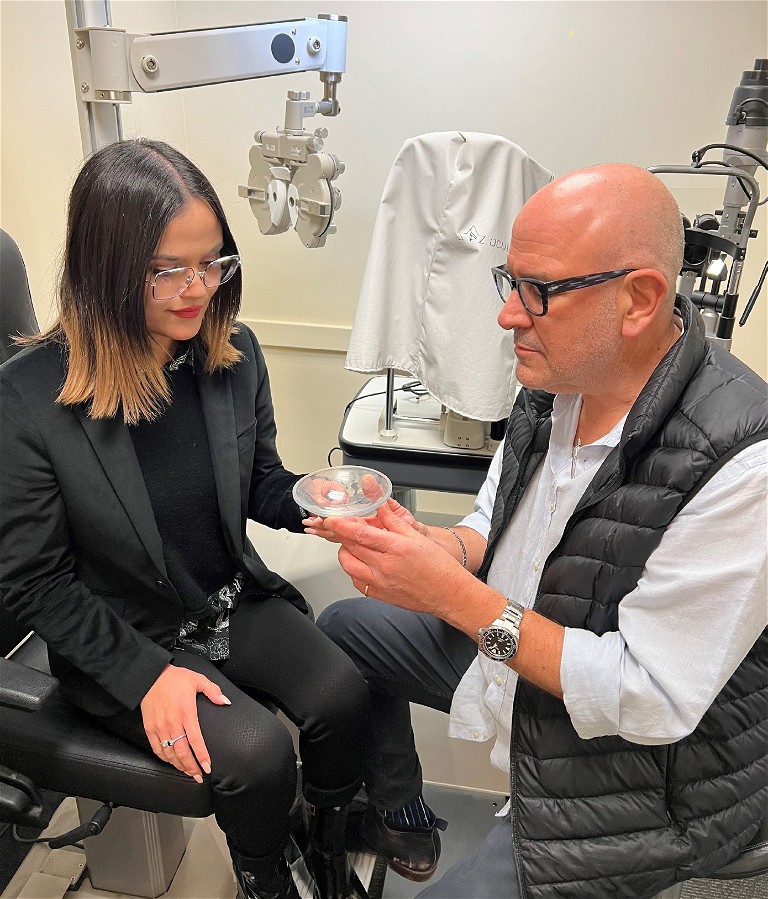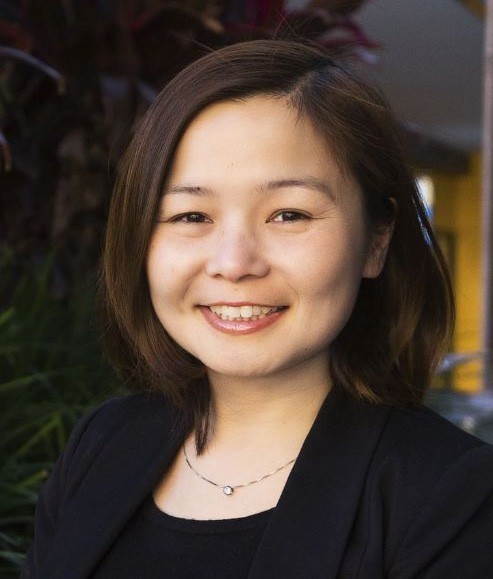mifeature
Transitioning to a Contact Lens Practice

How to Make it Work
Whether it’s the fear of the unknown or simply the Australian culture that likes to let things roll, contact lenses have not taken off. Despite the abundant evidence to support the safety and comfort of modern contact lens technology, and the myriad consumer surveys that tell us contact lenses can improve quality of life, just 14% of the eligible population actually wears them. It’s a weak statistic when compared against Europe, which has a 40% penetration.
For this article, mivision spoke to a few passionate contact lens practitioners about what drives them to proactively recommend, fit, and support contact lens wear and how they’ve made this part of their business work for them.
Talk to any contact lens practitioner and they will extoll the virtues of fitting contact lenses.
“It’s professionally rewarding – once you’ve learnt to fit specialty lenses, such as sclerals, rigid gas permeables (RGPs), or orthokeratology (OK), you’re more likely to explore other more complex areas of optometry – and that’s what makes our career exciting,” said Dr Margaret Lam, Head Optometrist at 1001 Optical, Bondi Junction Sydney and current National Vice President of the Cornea and Contact Lens Society of Australia (CCLSA).
“Multifocal contact lens fitting is where art meets science,” said Narelle Hine from HineSight Optometry in Sydney’s CBD. “When you’re fitting complex cases with contact lenses, you’re looking at the patient’s lifestyle and visual needs, their ocular measurements and refraction, and you’re working out which lens optics – the size of a pupil – will meet their progressive lens needs… It’s creative. When you are successful, you can change someone’s life!”
In a highly competitive and corporatised market, “it’s nice to have advanced skills in something – you need a unique point of differentiation and I find this is something many of the young grads are looking for”, Ms Hine said.
Hilton Sandler, from Peter Hewitt Optometrists by George & Matilda Eyecare in Mosman, Sydney, gets equal satisfaction from fitting simple contact lenses. Observing the difference that contact lenses can make to a patient’s quality of life he said, “You hear it in their tone of voice, you see it in the expression on their face, it makes them so happy to be able to function properly without wearing glasses”.
BABY STEPS
Transitioning from general optometry into a contact lens practice is not something to be done overnight – especially if you’re planning on prescribing speciality lenses.
This is where education providers come in to play. The Cornea and Contact Lens Society of Australia (CCLSA) is a rich source of education, with regular workshops, conferences, fellowship programs, and mentors on hand to provide you with knowledge and confidence. The University of New South Wales School of Vision Sciences has recently relaunched its advanced contact lens prescribing courses and the Australian College of Optometrists also offers advanced contact lens education.
On top of this, there are endless YouTube videos, peer-reviewed articles and, of course, the suppliers.
As Mr Sandler told mivision, “It’s also important to educate your staff. They don’t need to know all the technical details of every product; they just need to make patients aware that you can fit simple and complex contact lenses and direct them to the optometrist for clinical advice.”
When it comes to fitting complex contact lenses Ms Hine said finding a mentor can be extremely useful for guidance. “Starting from ground zero, you need to get your theory straight. Then you need to get hands on experience with different contact lens cases – and some more complex patient cases you won’t see every week or even every month, which is why it can take a while to advance your contact lens fitting skills.
“Having a mentor in the early stages can help with lens design selection. Even when you have experience, some cases, like keratoconics, high minus or patients with grafts can be unique fittings. The CCLSA is a great hunting ground for mentors because we all love contact lenses – but we aren’t experts in all areas, so you need to find the one who shares the same interest as you and who has time to spend building your skills.”
KITTING OUT
Kitting out your practice to offer contact lenses is not necessarily difficult, however it can be expensive.
You’ll need a sink and mirror – which all practices have; tools like a slit lamp, a corneal topographer, and perhaps a tomographer; consumables such as nonpreservative salines, lens cleaners, contact lens trial kits; and a space to sit patients down so that you can teach them to insert and remove their lenses.
Complex contact lens fitting is where the expense comes in with Ms Hine saying each trial kit for speciality lenses can set you back around AU$1,000.
That expense can be recovered however, if you’re prepared to charge for your expertise. And this is something that all three optometrists were adamant is essential.
“ once you’ve learnt to fit speciality lenses… you’re more likely to explore other more complex areas of optometry – and that’s what makes our career exciting ”
“There is a lot of work involved in contact lens fitting,” said Mr Sandler. “So, you need to charge for your time and effort. People will value you more if you do. They will appreciate your knowledge and experience and they will pay for it.”
Ms Hine added, “For a long time we have been giving our professional services away by not charging fees. There is valuable expertise in knowing which contact lens design will optimally fit which eye, first fitting.

Narelle Hine
“We need to develop the awareness in our patients that contact lenses are a medical device. We need to provide education to ensure they become aware of the need for a certain level of care to minimise the risk of infection and maintain ocular health,” said Dr Lam. “Studies, such as those by Professor Fiona Stapleton, have shown there is a 10 times higher risk of infection among patient who buy contact lenses online.1 They’re also at greater risk of dry eye, less comfort, and simply not wearing the latest technology that provides them with the best vision.
“Another essential piece of knowledge for patients to take away is that contact lens technology continues to evolve very quickly, so regular check-ups in future, not just to maintain a patient’s eye health but also to improve their future contact lens experience are important.

Hilton Sandler
“Underpinning this is the need to offer contact lenses at a competitive price. If you do that, patients will reward you with their loyalty.”
Mr Sandler added, “I make it as easy as possible for the patient by supplying them with contact lenses to last three or even sixmonths – the more time you can save them, the more likely they will come back to you.
With contact lens drop out sitting at 25 to 30% of wearers within the first five years of use,2 ongoing support – to ensure patients are confident with fitting and removing their lenses, and to manage their ocular health and comfort – is essential.
“Good aftercare is also invaluable for maintaining patients’ eye health and building their loyalty, so our staff reach out to each patient when they are due to order new lenses, and make sure their aftercare is up to date before any new lenses are supplied. We are also fastidious about having patients’ lenses in stock, ready to go.”
IF IT DON’T FIT
For those who aren’t interested in fitting simple or complex contact lenses, Mr Sandler has some simple advice: “Don’t bother.”
“ Australia punches above its weight when it comes to the contact lens technology we have at our finger tips, yet we are not getting the penetration of lens wear that we see in Europe ”
Instead, refer to a colleague who has the interest, the knowledge, and experience to ensure your patient’s needs are met. In many cases, there will be another optometrist in your practice or in the local area who can help and there is a Medicare rebate number for inter-referral so that no-one misses out financially.
“I know some worry that they will lose patients when they do this, but this is about doing your best for the patient,” said Dr Lam.
To protect your patient relationship, Ms Hine added, “It is about sending a very clear referral that says you want the optometrist to look after the patient for a specific reason and then send them back into your care… If you do the right thing by your patient, they will come back to you.”
START THE CONVERSATION
Mr Sandler, Ms Hine, and Dr Lam agreed that it’s easy to get patients into contact lenses – you just need to start the conversation.
“Australia punches above its weight when it comes to the contact lens technology we have it at our finger tips, yet we are not getting the penetration of lens wear that we see in Europe,” said Dr Lam. “Perhaps that’s because it’s the Australian way not to be pushy, or perhaps we need more comms training – I don’t know, but what I do know is that we just need to reflect on the difference contact lenses can make to a patient’s life.
“For someone who loves the gym or has an outdoor lifestyle, or someone who doesn’t enjoy wearing glasses, contact lenses can make a huge difference. So, it’s about sitting down with the patient and taking the time to listen closely to them about their lifestyle; it’s about understanding their needs then proactively recommending contact lenses to those who are suited to them. We can lead the conversation,” said Dr Lam.
“And, as a consequence of making the effort (to prescribe, fit and educate patients on contact lens wear), we will build patient loyalty. We can also be confident that we’ve done everything we can to help them with their vision.”

Dr Margaret Lam
Reference
1. Stapleton, F. (2020), Contact lens-related corneal infection in Australia. Clin Exp Optom, 103: 408-417. doi.org/10.
2. mivision.com.au/2022/07/cl-technology-consumerinterest-grows.